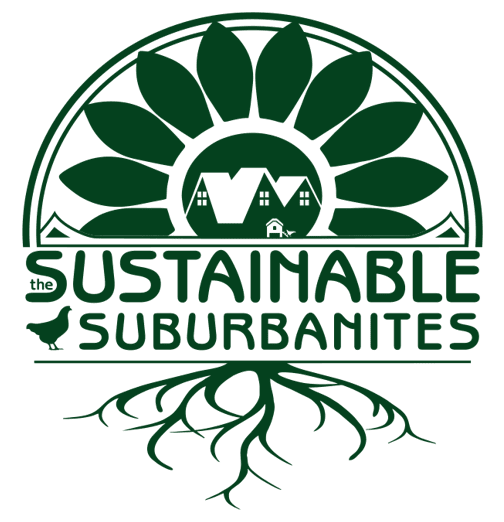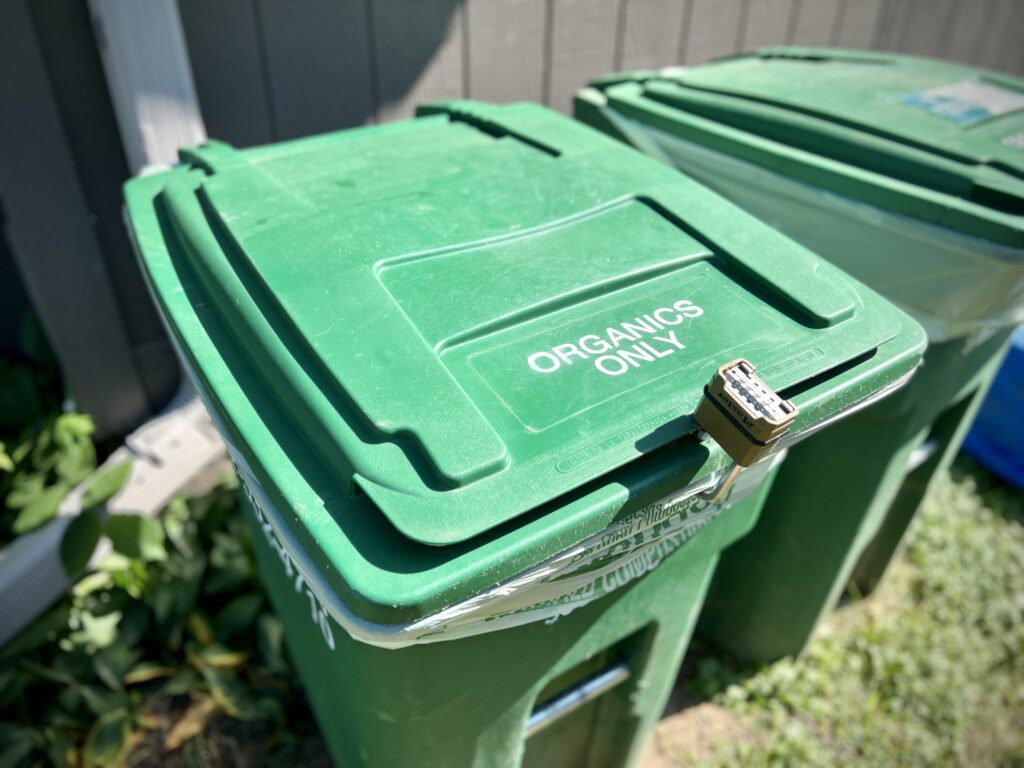This post may contain affiliate links, meaning we may earn a commission for any purchases made through our links.
So you want to learn to compost…
But science is confusing. Right?
Don’t worry! You are not alone in feeling confused and overwhelmed by this process. Until about two years ago I didn’t really understand it, either. My only frame of reference for composting was large compost heaps on farms. I had no clue how to do it in an urban setting.
The trick is to sort through the 8.4 million ever so slightly different compost methods to find the system that will work for you. Deciding on a system is far more challenging than actually implementing one.
There’s just so much marketing and cultural conditioning to work through to determine what method will work best for you – so let’s work through it.
The TL;DR of all of this:
- The “I don’t want to think that hard about this” method is to join an industrial compost club
- The alternative is to be willing to experiment with what will work for the unique conditions of your environment and the waste you create. There is basically no “wrong” way to compost – it all comes down to how much time and money you want to dedicate to your setup.
How We Currently Compost
Currently, our family belongs to an industrial compost club. Hillside Solutions, our compost service, has drop-off locations all over our city where members can drop their organic waste to be transported to an industrial composting facility. Hillside does all the work of actually composting the material. The only thing that compost clubbers have to do is save their organic waste, then drop it off at one of the many convenient locations.
We love belonging to the compost club so much that we even got set up with Hillside to be one of their drop sites. We have two large green bins in our side yard that compost clubbers in our area have access to 24/7.
It’s been a great experience for both us and the other compost clubbers in our area. There are significantly fewer compost drop sites in this part of the city, so it used to be a bit of a trek to drop off at the next closest one. Now, our drop site is literally in our side yard! Plus, we get to chat with all the neighbors that come by to drop off with us about compost and all of our other sustainable shenanigans.
The bins are emptied weekly, exactly like any other trash or recycling service. It’s been a wonderful opportunity to educate folks about the safety and relative ease of industrial composting.
I’ve discovered much of the resistance to any type of composting is centered around a fear of pest issues or unsanitary conditions. Being able to show folks that we’ve had these compost bins for over a year and they didn’t even notice until I pointed them out helps allay those fears.

From a sanitation standpoint, it’s no different to put our organic waste into the green bins for pickup to go to Hillside than it would be to put them into the black bins to go to the county landfill. Other than reducing landfill waste of course! We’re happy to host a drop site and we hope other businesses continue to offer their space to do the same so industrial composting can become even more accessible in our city.
If you’re still not convinced such programs are a smart idea, please note that global health leader, The University of Nebraska Medical Center is another Hillside drop site. If collecting compost for weekly collection was a health hazard, they most assuredly would not participate in such a program.
The Benefits of Industrial Compost
The best part of composting this way is that we literally don’t have to do anything. Before we were a drop site, we simply collected our waste in a dedicated trash bin in the garage. The closest drop site was fairly close to Reneelynn’s work, so she dropped it off whenever the bin filled up.
The other benefit of composting with an industrial service is the significant expansion of compostable items. Animal waste, meat, and dairy products are all compostable, but not recommended for home setups due to potential contagion or pest issues. With industrial composting, you don’t have to worry about any of that. Their setups are heckin’ huge and can handle any type of organic waste you could think of, safely and efficiently.
Find Out if Industrial Compost Services are Available Near You HERE
Still Want to Go With an At-Home Compost Setup? That’s Cool!
If industrial composting isn’t for you, for whatever reason, an at-home setup is pretty easy to get started. These two guides are incredibly helpful in explaining exactly what compost is. Once you understand that, the rest is basically trial and error.
https://www.nrdc.org/stories/composting-101
https://www.epa.gov/recycle/composting-home
I know that seems really unhelpful, but in my experience, the reason that compost seems so complicated is that folks are looking for directions that don’t involve any trial and error. Composting is a scientific process, and all scientific processes are going to be influenced significantly by the specific environmental conditions of your space.
The good news is that failed compost is compostable, so don’t worry about messing it up. Anyone can get the hang of it, and you have nothing to lose but things you’d be throwing into a landfill anyway.
How I Started:
When I first decided to compost, my space and finances were both extremely limited. It was, however, the first summer of COVID, so I had basically infinite time to peruse articles and blog posts about starting up an at-home compost bin.
After reading oodles and oodles of articles about all the fancy stuff to buy, and all the weird worms I supposedly needed to be successful, I decided that the “This All Seems Overly Complicated, I’m Just Going to Wing It Method,” was for me.
So that’s what I did!
I drilled some holes along the sides and lid of a kitty litter bucket, tossed in some leaves and soil from the lawn, then started throwing our produce scraps and coffee grounds into it. I made sure to cut up my scraps into very small chunks, stir regularly with an old set of tongs, and drain excess liquid any time my compost seemed too goopy.

My only real hiccups were that I needed to add more holes because I didn’t have enough to start with, and since I kept it inside I wasn’t able to have drainage holes in the bottom. It took me a bit to figure out that I needed more “brown” items like leaves and paper products so I didn’t have to drain the liquid out as often and things would actually break down properly.
I had no issues with pests or odors because my setup was very small, and I addressed my moisture issues quickly. While I know the concept of “rotting food” in the house is rightfully considered pretty gross, I can assure you that if you are composting correctly pest and odor issues are both uncommon, and quite easy to remedy.
What’s the point of composting?
If you’re still with me at this point, I think it’s important to touch upon why it’s so important to normalize composting in the first place.
Just because you decide to send your organic material to a landfill doesn’t mean that it’s not gross and harmful and unsanitary somewhere else – it just becomes an “out of sight, out of mind” thing. It becomes someone else’s health hazard to deal with.
Landfills are so easy to take advantage of because they’re free and accessible to use, but they’re absolutely horrible for our planet. Keeping food waste out of them is easy to do once you unpack some of the conditioning that falsely has the general public believing that composting is somehow less sanitary than landfilling.
Landfills are gross. Compost is not. It really is that simple.
Final Observations and Thoughts
However you decide to compost, your final compost product should be largely the same. It should be moist, but not wet, and have a very earthy smell. It should look and smell very similar to soil. By controlling moisture levels, greens-to-browns ratios, and temperature conditions as the organic materials break down, truly anyone can create compost in any environment!
I know the science lingo seems overwhelming which is why I tried very intentionally to not use it a ton myself, but rather tag relevant articles dedicated to those specifics. Why reinvent the wheel, right?
Instead, my goal here is to reassure you that no matter what method you go with, you can make compost. Whether you decide to purchase a backyard tumbler or set up a kitty litter bucket with holes in it under the kitchen table, the process is the same.
Always remember that you don’t have to completely know what you’re doing to get started. The best way to learn is to just try stuff out, and ask questions from folks who have gotten the hang of things before you. We’re always happy to help troubleshoot if you get going and aren’t achieving the results you desire.
Happy composting, friends!

